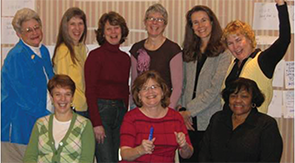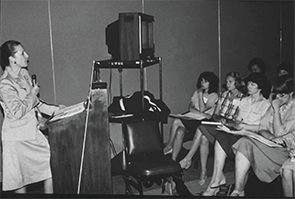
A past hardworking Annual Meeting Program Subcommittee.
How do you tell a story 50 years in the making? How do you capture 50 years of achievements, moments, personal and professional relationships, and careers shaped? How do you define the exact moment collaborative and integrated care teams became the rule—not the exception—in rheumatology?
To journey through the milestones that have led to the Association of Rheumatology Health Professionals’ (ARHP’s) Golden Anniversary, it’s best to go directly to the people who were there—those who, along with their fellow members, built the organization that today serves more than 1,300 healthcare professionals in rheumatology.
This summer, several past presidents—whose presidencies ranged from the early 1970s to 2015—reflected on the ARHP’s 50 years of service to its members. Although each president recalled various memories and organizational achievements, they all noted similar themes that have set the ARHP apart for the past 50 years: innovative, member-centric education; an inclusive and welcoming environment; opportunities for personal and professional development; and the ARHP’s unique, integrated structure.
An Organizational Structure that Sets a Standard
Throughout its first 50 years, the ARHP has undergone many changes and enjoyed steady growth. One change that cemented the Association’s commitment to integration and collaboration between its members and the rheumatologists with whom they regularly collaborate was the decision to merge with the American College of Rheumatology in 1994. With this merger came integrated committees and cross representation on both governing bodies.

An ARHP Annual Meeting in the early 1980s.
Laura Robbins, DSW (ARHP president, 1993–1994), was president at the time of the merger and recalled the hard work by both the ARHP and the ACR to ensure success. “There were concerns and fears about the ARHP losing its identity and autonomy, and we collectively worked with the ACR’s leadership to build bridges,” she says. “I really think we set the groundwork for a new environment where both groups could help and learn from each other.”
For Robert W. Richardson, PT, MEd, FAPTA (ARHP president, 1976–1977), this structure is a hallmark of the ARHP that is envied by many other disciplines and organizations. “Inclusiveness is an opportunity to share expertise and ideas,” he explains. “We are all good at what we do, but not always good at what other people do. An integrated structure was a different approach from what people were used to seeing at that time, but it has served both the ARHP and the ACR well.”


